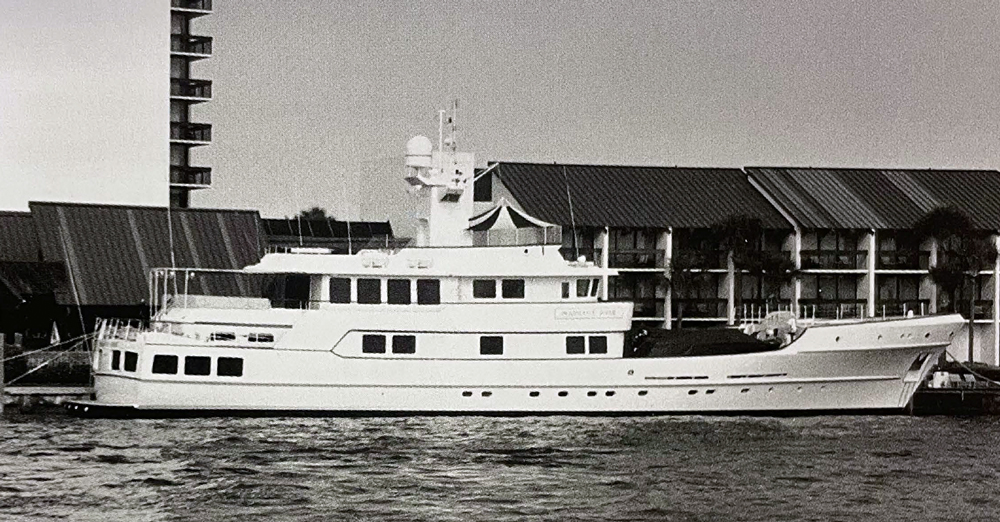Quoted text comes from The Encyclopedia of Yacht Designers, by Lucia del Sol Knight and Daniel Bruce MacNaughton, copyright 2006. The section on Gerhard Gilgenast begins on page 179 and was written by Jack A. Somer.
Gerhard Gilgenast was born in 1938, in a town that now belongs to Poland. At the end of World War II, his family fled to Germany and settled about 80 miles west of Lemwerder, home to the famous boatbuilding firm Abeking & Rasmussen (A&R). In the 1950s, the teenager apprenticed there, and the toolbox he bought is identified by his biographer as one of his unique strengths as a naval architect—along with a “decidedly artistic, often opinionated temperament.”

After the apprenticeship ended, our hero (“ever a restless soul”) carried that toolbox onto a freighter bound for New York. In 1960 he went back to Germany for a naval architecture degree; Somer says that he was “an original, somewhat aesthetic thinker… [but] undeniably a rather lazy student.” After school, he returned to the US and worked for several well-known yacht designers: Bill Tripp, Phil Rhodes, and Sparkman & Stephens.
According to Somer, it was 1969 when Gilgenast returned to A&R as chief technical designer—the year Hound was transformed from Nielsen’s detailed drawings into aluminum. All that opinionated letter-writing that brought him to my attention probably didn’t play much of a part in his path to fame; he is remembered for “formulating a new motoryacht type ultimately to be characterized by its fluid lines, efficient propulsion, thoroughly analyzed structure, high speed, low noise, and long range.”
Prominent Gilgenast designs include two yachts built for the Aga Khan, as well as exterior work on the very well-known Octopussy. Though I don’t share his taste for large motor vessels, the yacht brokers of today still drop his name as a selling point, more than thirty years after his death.
Curious why I wrote down this history of a man long-lost to time? Here’s the explanation.